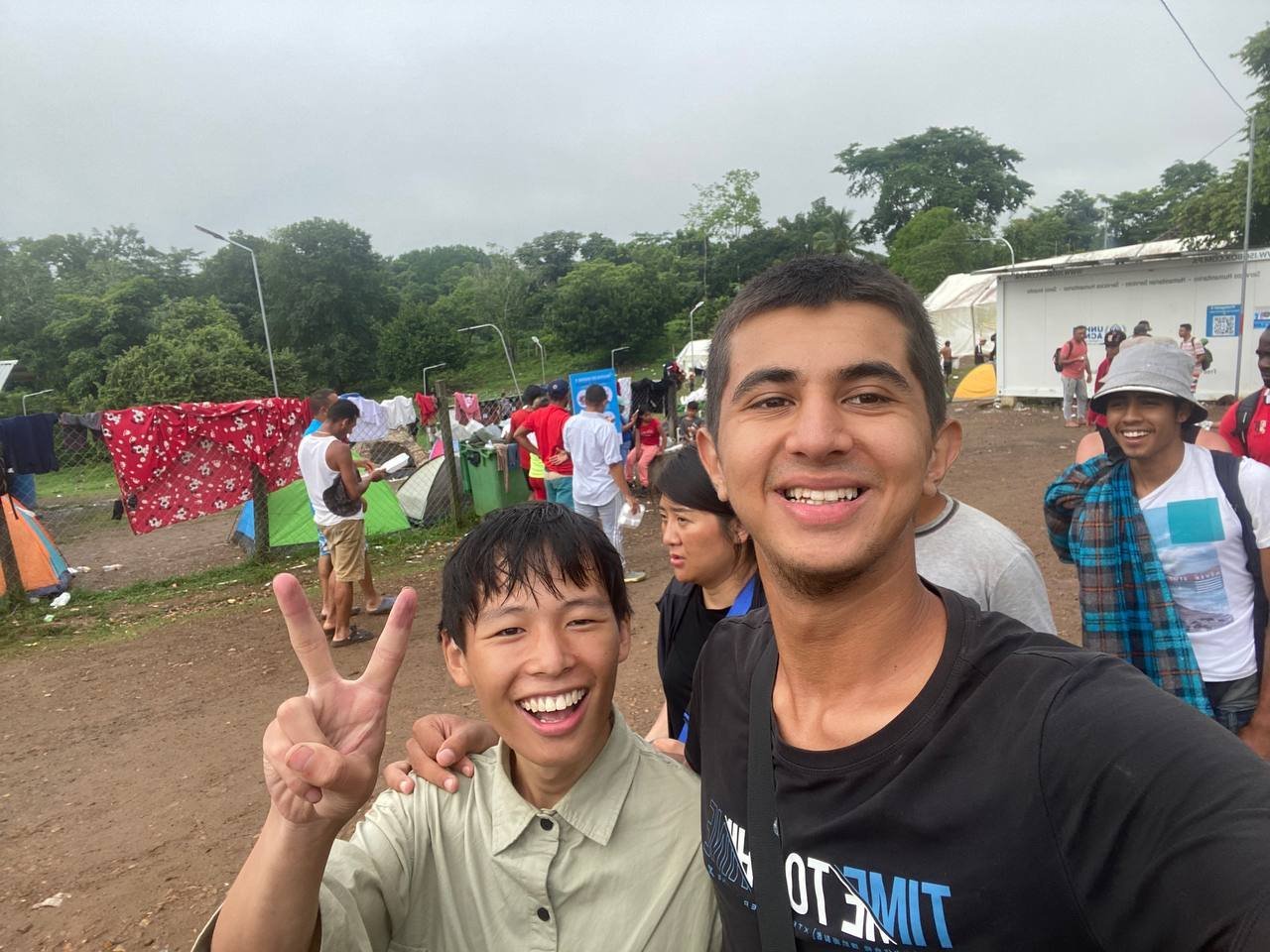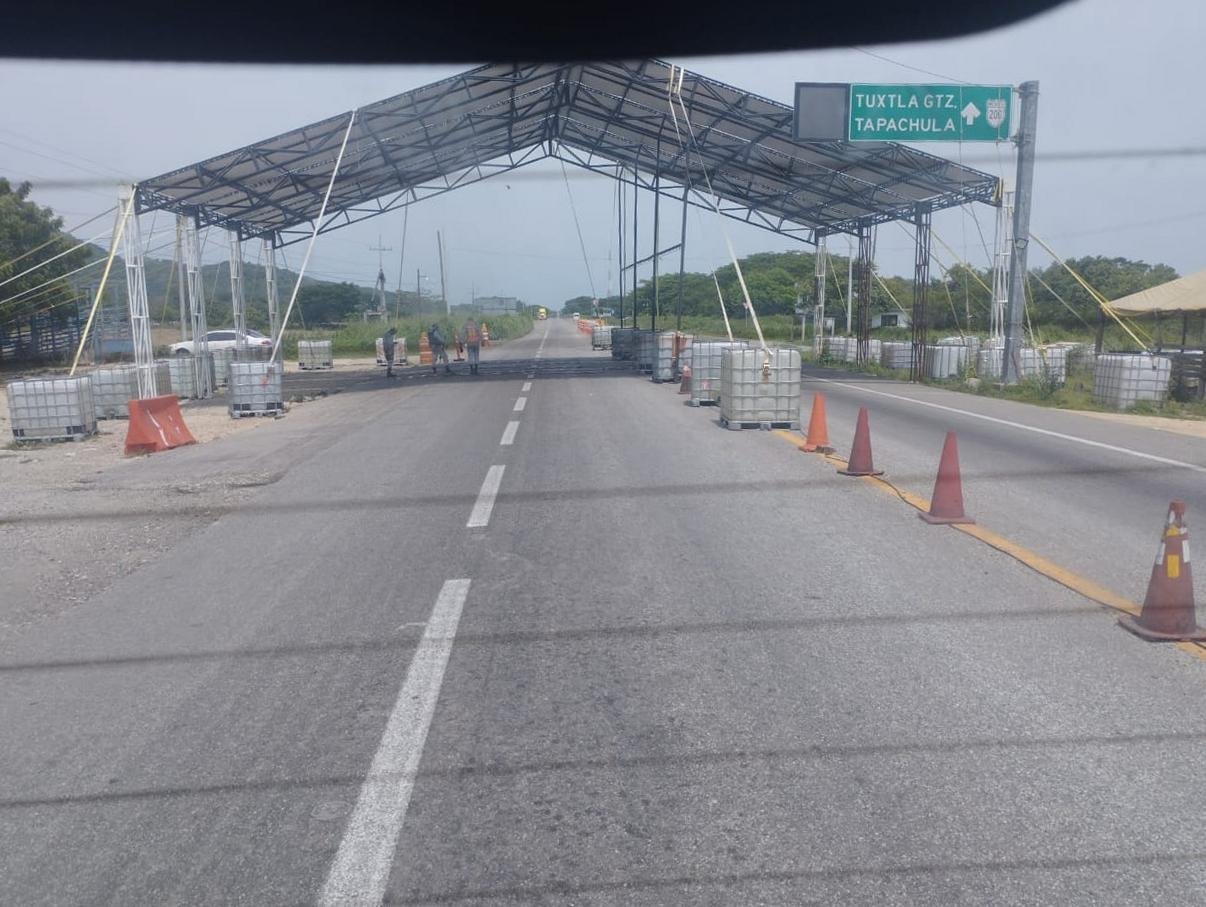Seeking Asylum, Kazakhstani Flees to US
 coverphotocollage: Orda.kz
coverphotocollage: Orda.kz
Fearing persecution by the authorities, Nodir Muminov bought a ticket to the Dominican Republic in July 2023, hoping to get to the United States. He, however, ended up trekking the infamous route from Colombia to the United States, landing in an American prison.
"-Stan" = Refugee
Nodir Muminov had two reasons to leave Kazakhstan. The first was the arrest in June of this year of the leader of the unregistered party "El Tiregi", Nurzhan Altayev. Nodir had ties to this party. The second factor - the verdict handed down to the journalist and activist, Aigerim Tleuzhan, in the case concerning events at the Almaty Airport during the January Events. Aigerim is a good acquaintance of his. Nodir was also considered to be an organizer of the couriers' protest, participated in rallies, including during the January Events.
In July, he bought a ticket to the Dominican Republic.
Why there? Firstly, because Kazakhstan has no visa (requirements - Ed.) with the Dominican Republic. And, for example, to Europe or South Korea, you would have to get a visa. Secondly, I know eight languages, including Spanish, says Nodir.
His plan: fly from the Dominican Republic to Colombia then to Nicaragua, as these two countries are also visa-free for Kazakhstanis. The young man intended to get to the US From Nicaragua through Mexico. There he wanted to request political asylum. But things didn't go as planned. In Colombia, Muminov was not allowed on his flight.
The Colombian border guards, if they see "-stan" in the name of the country, then for them it already means that the person is a refugee who is going to the United States. And, as I understand it, the US is asking them to limit the number of such people,says Nodir.
Nodir thereby had try a different route.
Jungles, Caimans and UN
The path of thousands of Latin American migrants to the United States begins at the border of Colombia and Panama, i.e. the Darien gap. It is about 160 kilometers of impassable jungle and swamps. Nodir began his journey there.
This is a territory that is not protected by government forces. There are only rebels and drug dealers there. You could say armed bandits. The rebels check passports at the entrance to the jungle and collect $200 per person. That's how they make money. It's dangerous to walk alone through the jungle. It is better in groups of 20-30 people. That's what I did, says Nodir
For four days, Nodir made his way through the jungle together with others. They ran out of food on the second day, having to drink only water collected from the river. Doing so served as a reminder of the dangers surrounding them. Bodies of those who were attacked by caimans were floating in the water. Nodir says that he witnessed such an attack.
We had a couple of people from China in our group. When we crossed the river, they were swept away by the current and were drug under by caimans, he says.
The rainy season From May to November in Central America did not help. Showers occurred every day.
On the fourth day we arrived at the UN camp in Panama. There was already civilization there. They took biometric data from everyone and put them on buses to Costa Rica for $50.


According to Nodir, there were almost no problems on the way from Costa Rica to Mexico. In Costa Rica, he was robbed for the first time during the trip.
Three Attempts
Nodir Muminov crossed the border of Costa Rica and Nicaragua legally. And then, he made his way through Honduras, El Salvador and Guatemala, bypassing border posts along with refugees from Venezuela, who knew where to go.
The hardest part was in Mexico. There are posts every two kilometers that track illegal immigrants. And if you don't have a visa, they send you to Guatemala, says Nodir.
 A post at the entrance to the city of Tapachula. Photo: Nodir Muminov
A post at the entrance to the city of Tapachula. Photo: Nodir MuminovNodir was subject to such deportation twice. The first time he was caught just a few kilometers from the border. The second was on the home stretch – the border of Mexico and the state of Texas.
It was very disappointing because there were literally 50 meters to the border. And it was very difficult to get there. For example, we rode on the roof of the train for two days, says Nodir.
Muminov said this way is the safest. Any other way could end in running into drug cartel members. Nodir also told us about how their bus was stopped by the police who demanded $500 from each passenger.
After the third border Guatemala crossing, Nodir made his way to California. Along the way, he met the first and only other Kazakhstani, Madi.
There are quite a lot of refugees from Central Asia, but mainly from Kyrgyzstan, Uzbekistan and Tajikistan. There are very few Kazakhstanis, says Nodir.
Orda journalist spoke with Nodir when he was already in a Mexican border town. By that time, he still did not know whether he would be able to cross the border or not.
Wagner?
We had learned about Nodir Muminov's fate from the Buryat journalist, Evgenia Baltatarova, who lives in the Republic of Kazakhstan and kept in touch with him. It turned out that he had crossed the border legally. But in the end, Nodir and his companion were detained by American law enforcement.
They crossed the border using the CBP One application, which allows you to legally and quite simply get from Mexico to the United States. Usually this is followed by an interview and the person is released to wait for a court decision on asylum. The main thing is that he does not leave the state. But, as Nodir said, they did not have an interview, but were immediately sent to prison, says Baltatarova.
As it turned out, Nodir and Madi were sent to an immigrant prison in the city of Calexico, which is notorious for its poor treatment of prisoners. Nodir confirmed this in a conversation with Evgenia.
He said that they were about to declare a hunger strike there because of the poor conditions and uncertainty, the journalist said.
According to Baltatarova, her American colleagues did not suspect that migrants from Central Asia, China and Russia were there.
Baltatarova wrote a little later in her Telegram channel that this is because of Wagner. The United States began to fear that people involved in war crimes would enter the US after the PMC fell apart.
All visitors from the countries of the former USSR are placed in migration prisons for the entire period of consideration of the case, that is, from four months to two years. The courts are held in the same place, on the territory of migration prisons, where there is no Internet. People cannot upload their documents, evidence of persecution, and lose in the courts, she wrote.
Muminov certainly could not have imagined that, because of this, fleeing Kazakhstan would turn into ending up in an American prison.
Original Author: Igor Ulitin
DISCLAIMER: This is a translated piece. The text has been modified, the content is the same. Please refer to the original piece in Russian for accuracy.
Latest news
- President Toqayev Sends Nazarbayev Birthday Wishes
- Toqayev Appoints New Ambassadors in Series of Diplomatic Changes
- Unidentified Object Resembling Drone Found in Atyrau Region
- Trump and Zelenskyy Discuss Air Defense Needs
- Rapper Qurt: Wife Withdraws Statement in Court
- Head of Azerbaijani Cultural Autonomy in Moscow Region Reportedly Loses Russian Citizenship
- Defense Secretary Hegseth Paused Ukraine Weapons Shipment Despite Pentagon Assessment — NBC
- Prosecutor General's Office Confirms Detention of Kozhamzharov's Associate in Torture Case
- State to Scale Back Role in Competitive Sectors
- Uzbek Banker Kidnapped in Paris
- Former Financial Police Officials Reportedly Detained, Case Concerns Torture
- Progress MS-31 Launches from Baikonur Carrying Fuel, Water, and Scientific Cargo
- Two Men to Face Trial for Homicide of Missing Atyrau Woman, Body Not Found
- Russia Launched Massive Strike on Ukraine Following Trump–Putin Call
- Rapper Qurt Accused of Abuse by Wife
- Pavlodar Region: Rescuers Seek Lower Retirement Age Amid Strain of Risky Work
- Businessman Vagif Suleymanov Detained in Moscow
- Kashagan Field Reaches One Billion Barrels of Oil Extracted
- Lenin Street in Osh Renamed After 19th-Century Kyrgyz Leader
- New Uranium Plant Launched in Turkistan Region with French Partnership

